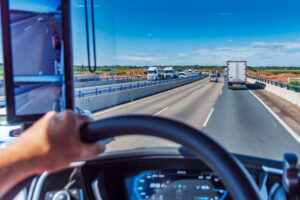Ever watched someone nod off at a red light? Not a good look. Driver fatigue camera technology tackles that very scenario. Imagine a system keeping a constant, watchful eye, even on the rainy, lonely highways where eyelids might start to droop. These little gadgets aren’t just digital babysitters. They’re revolutionizing transportation, one yawn at a time.

Let’s talk turkey: truckers, cab drivers, and those burning the midnight oil have encountered groggy moments behind the wheel. It’s nothing to sneeze at. Drowsiness is a silent saboteur, creeping up without much warning. Driver fatigue cameras analyze head position, eye movement, and facial cues. If your eyelids droop lower than your spirits on a Monday, a friendly nudge—a beep or even a seat vibration—comes your way. Like your mom giving you a gentle tap but slightly less annoying.
The privacy worry looms, sure. Nobody wants Big Brother riding shotgun. Yet, these cameras are laser-focused on safety. They’re not recording secret karaoke sessions in the cab. Most process data live, then forget it just as quickly. Some folks even report feeling reassured by that subtle oversight—like having a co-pilot minus the banter.
Another angle: insurance companies perk up their ears at these gadgets. Fewer groggy crashes, more cash saved. They’re known to lower premiums for vehicles fitted with the tech. One could argue that a camera’s worth its weight in fuel savings alone.
Fleet managers cheer at the prospect too. Real-time alerts mean they can address risky habits early, before disaster knocks. That translates to fewer calls spent explaining spilled cargo or wrecked bumpers. Good for business, better for sleep-deprived drivers, best for everyone else sharing the road.
Let me paint a picture: a four-coffee morning, white knuckles on the wheel. Suddenly, a warning buzz. Not a police siren, not a scolding boss—just a little guardian angel in diode form saying, “Take five, pal!” Sometimes technology feels like magic; sometimes it’s just practical. This is both.
Technical nuts and bolts? Many systems pair with other sensors: steering patterns, lane drifting, and sudden braking all add context. Artificial intelligence models learn your behavior, not in a creepy way, but to spot out-of-character fatigue. It’s not about perfecting human drivers, but about giving them every chance to get home safely, no matter how long the journey.
Still tempted to roll the dice and trust a double espresso instead? If your rig has a driver fatigue camera, you’ve already stacked the deck in your favor. Sleep is sacred, but so is safety. Better to skip counting sheep on the road, and let a watchful lens lend a hand.